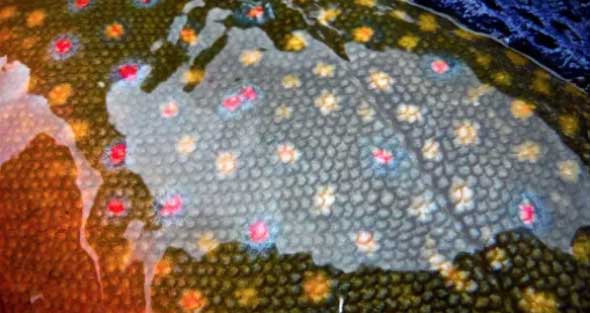Pennsylvania’s native brook trout already face stessors. Climate change is making those stressor more accute. Photo by Chris Hunt.
By Brian Wagner
On March 27, I attended a program titled, “Roundtable on Climate Change: Effects on Fish, Wildlife and Forests,” at Wilkes University in Wilkes Barre, Pennsylvania.
The program was put together by Ed Perry, who is the Pennsylvania outreach coordinator for the National Wildlife Federation’s Climate Change Campaign. Guest speakers included Dr. Shawn Rummel, field and research manager for TU’s Pennsylvania Coldwater Habitat Restoration Program; Greg Czarnecki, climate change and research coordinator for the Pennsylvania Department of Conservation and Natural Resources and Lisa Williams, the program leader for ruffed grouse, Pennsylvania Game Commission.
Beyond the compulsory slides regarding the science of climate change and the disturbing slide that shows the reality of “if we do nothing,” I was intent to hear what the prospects were for several of our iconic species including our state tree, fish and gamebird. All three, the eastern hemlock, brook trout and ruffed grouse are already under threat from various stressors including invasive species, habitat loss and disease. I was about to find out how insidious climate change might be by compounding these issues.
I learned that ruffed grouse require a specialized habitat, namely young forest (less than 20 years old) and have poor ability to disperse to new more suitable areas. These traits make ruffed grouse particularly climate-change susceptible. Ruffed grouse in northern latitudes “snow roost,” or seek thermal cover by burying themselves under powdery snow. Weather changes which could limit snow pack or produce more freezing rain could potentially threaten grouse with exposure and increased predation. Spring time precipitation changes, both heavy rains and flooding, could affect nest sites, chick mortality and juvenile survival. Summer temps extending into spring and fall benefits mosquitoes that carry West Nile virus, a relatively new threat to grouse. While much study will be needed to assess the impacts that climate change will play in these stressors, one take-away was the need to build resiliency through habitat creation. Sound familiar?
Brook trout and our eastern hemlock seem to go hand in hand. In fact, they are so closely allied that at one-time brook trout were called hemlock trout. The eastern hemlock is already under attack by the hemlock woolly adelgid which feeds on sap from the tree’s needles and can typically kill a tree within three to five years. Cold winters can help keep the woolly adelgids at bay, but with a forecast of milder winters ahead, we may well see an expansion in the range of this invasive. At one-time, cold winters kept the adelgid confined to the southern United States, but as winters have warmed, the adelgid has now infested hemlocks throughout the eastern United States, all the way into southern Maine. The impact of hemlock decline on brook trout is still largely unknown.
What other predicted climate change factors will affect our beloved native brook trout? Warmer summer temperatures and lower summer flows will lead to higher water temperatures and less suitable habitat resulting in reduced growth, survival and reproduction. More intense storm events will lead to increased erosion and sedimentation resulting in a reduction of aquatic insects, filling in of spawning areas and restriction of fish movement. More high flows in the winter will scour stream beds and increase erosion resulting in reduced reproduction success.
Brook trout are already susceptible to multiple stressors including water temperature and changes in land use. Brook trout require cold water and forested habitat, and cannot tolerate a high percentage of agriculture, fragmentation or impervious surface in their watersheds. Climate change will narrow their tolerance to these already existing stressors.
So, what can we do? Build resiliency! Using TU’s Eastern Brook Trout Conservation Portfolio and Range-wide Analysis and the Protect, Restore and Reconnect model, we can identify where our restoration work can do the most good for brook trout. Identifying and protecting our brook trout strongholds is critical. All the restoration projects including habitat work, riparian plantings, water quality restoration and agricultural improvements that Trout Unlimited is well known for will help build resiliency. Reconnecting populations of brook trout to suitable habitat is another critical step in building resiliency to climate change. I’m glad to say that assessing and prioritizing culverts for replacement is really taking off in Pennsylvania.
As I wrap up this blog, two points come to the forefront of my mind.
First, we need to address the disturbing slide in all climate change presentations that shows what will happen if we do nothing. We just can’t afford to do nothing.
Second, while we address and mitigate the causes of climate change, we can all help to build resiliency through all the habitat work that we cherish as Trout Unlimited members. While these predictions are disturbing, please don’t despair. We can do this.
Brian Wagner is the Pennsylvania representative on TU’s National Leadership Council, and he’s also the chairman NLC Climate Change Work Group.



